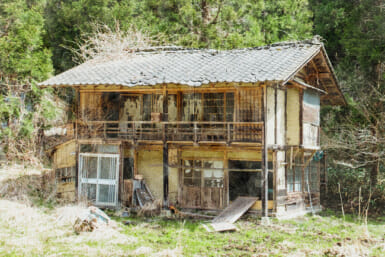In Japan, old habits die hard. Whether it’s outdated corporate structures resembling samurai clan patriarchies, or the rigid methods of operation endemic to political and administrative practices, the result is often the same: a staunch resilience to change.
The realm of energy production is a classic example, where the NGO-driven battle for a shift toward clean renewables is still being fought on the fringes of governmental discourse. According to a preliminary report, two-thirds of Japan’s energy production in 2019 came from fossil fuels, with a whopping 27.8% of the total coming from coal-fired power plants (though some estimates put it as high as 33%). During the same time, government officials spoke openly of the nation’s continued support for coal through home-grown production and the exporting of materials and resources abroad.
So, when stories began trickling out in July this year of Japan’s decision to shut over 100 coal plants across the country by 2030 – providing around 16% of its total energy production – it was a small, if slightly overdue, victory for those championing the future of clean energy, who have largely had their voices drowned out by the powerful forces driving the fossil fuel industry.
It’s too early to gauge what the overall impact of Japan’s new coal policies will be, but with new prime minister Yoshihide Suga expected to announce a pledge to reduce greenhouse-gas emissions in Japan to net zero by 2050, they have set in motion much-needed baby steps toward environmental progress.
A Black History
Japan has an enduring history with coal: historical records show that small-scale burning of the world’s dirtiest fossil fuel has taken place since the 16th century, when large deposits existed in Hokkaido, northern Honshu and Kyushu.
Following the Meiji Restoration in 1868 and Japan’s rush to industrialize throughout the late 19th and early 20th centuries, coal output was ramped up exponentially: in 1941 it reached over 55 million tons – that’s almost 14,000 Tokyo Towers’ worth of the black stuff mined in a single year.
Like many nations, Japan’s love affair with coal came under fire as environmental and air pollution concerns arose amid the liberalizing movements of the 1960s, and the then-recent invention of nuclear power, leading to a plummet in coal usage – nearly 1,000 mines were closed between 1955 and 2002.
But the pendulum has unfortunately swung back, most recently as a result of the 2011 Great East Japan Earthquake and the ensuing triple core meltdown at a nuclear plant in Fukushima, leading to widespread distrust of nuclear energy.
Japan has fallen back on coal before, and the new plans suggest it wants to maintain this fossil fuel safety net.
Baby Steps
Hundred-plus coal plants are expected to disappear from the grid by 2030 (the same year for which Japan has set a target of 22-24% renewable energy production). However, two-thirds will be replaced by more energy-efficient plants, meaning Japan’s reliance on coal at the beginning of the next decade is predicted to be as high as 26%.
While this is a frightening figure for a year the Paris Agreement marked as the climate’s potential Judgement Day, the air pollution stats will fare somewhat better. All of Japan’s newly installed generators will use ultra-supercritical or integrated gasification technologies slashing greenhouse gas emissions by up to 15%.
Rather than going cold turkey from coal, it’s clear Japan is taking a phase out approach, which has garnered criticism from some environmentalists and pro-green energy organizations who deem it to be half-baked.
In an op-ed for The Japan Times titled “This is the moment for Japan to rethink its use of coal,” columnist Brad Glosserman suggests Japan’s continued reliance on fossil fuel is more nuanced than mere environmental ignorance. “There remains concern about future natural disasters and the need to have a reliable backup energy option,” he writes, while admitting any upcoming energy decisions must be based around renewables and “green field” thinking.
Japan will also continue supporting exports of coal-fired power plants – alongside China and South Korea it’s one of only three nations still doing so. However, it has outlined export policies that align with a slightly greener future: Japan will only support exports of energy-efficient generators, plants that use a combination of coal and biomass, and to recipient countries who have a national strategy to reduce carbon emissions.
What Color Will the Future Be?
Until further coal reduction policies are announced, Japan will struggle to fully shed its fossil-loving tag. Coal is a primary component of the reckless human activity which has pummelled our environment into submission – or rather breaking point – over the past 200 years. The need for concerted and drastic amendments to all fossil fuel consumption worldwide is as clear as the skies once were.
Japan’s new policies are not drastic. But as Environment Minister, Shinjiro Koizumi, said, they represent “a turning point.” Though the nation’s relationship with coal is fraying rather than ending, there is a change in its environmental mindset. It’s the first time the government has given figures and deadlines for shutting down coal plants. After hundreds of years of coal usage, that in itself is significant.
Featured image: View from the roof of Yokohama Isogo thermal power plant on the LNG Town Gas Supplier in a rainy day. Shutterstock.









